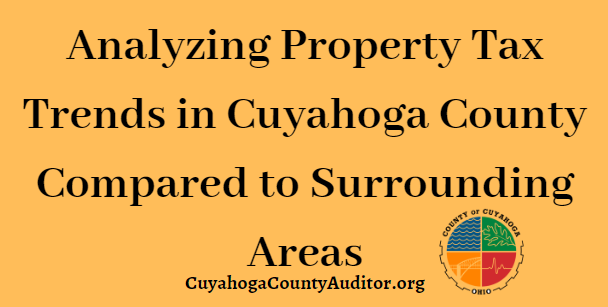Property taxes are a fundamental aspect of homeownership and real estate investment, serving as a primary source of revenue for local governments. These taxes are levied based on the assessed value of properties and are crucial for funding essential public services such as education, infrastructure, and public safety.
Importance of Property Tax Analysis
Analyzing property tax trends provides valuable insights into the economic and social dynamics of a region. By examining fluctuations in property tax rates and assessments, stakeholders can better understand local market conditions, demographic shifts, and policy implications.
Overview of Cuyahoga County Property Taxes
Property Tax Rates
Cuyahoga County, located in Ohio, imposes property taxes based on a millage rate applied to the assessed value of properties. These rates can vary depending on factors such as municipal boundaries, school district levies, and special assessments.
Property Tax Assessment Process
The assessment process involves determining the market value of properties through appraisal methods such as sales comparison, income capitalization, and cost approach. Assessments are conducted periodically to ensure fairness and accuracy in property taxation.
Comparison with Surrounding Areas
Similarities in Property Tax Trends
Cuyahoga County shares common property tax trends with its neighboring jurisdictions, including fluctuations in tax rates, assessment methodologies, and revenue allocation strategies. These similarities reflect broader economic and demographic trends affecting the region.
Contrasting Factors Impacting Property Taxes
Despite similarities, Cuyahoga County may experience unique factors influencing property tax trends compared to surrounding areas. These factors could include differences in property values, demographic profiles, and local policy initiatives aimed at economic development or tax relief.
Factors Influencing Property Tax Trends
Economic Conditions
Economic factors such as job growth, income levels, and housing market stability can significantly influence property tax trends. During periods of economic expansion, property values may rise, leading to higher assessments and tax revenues. Conversely, economic downturns can result in stagnant or declining property values, prompting adjustments to tax rates or assessment practices.
Demographic Changes
Population shifts, demographic aging, and migration patterns can impact property tax trends by affecting housing demand and property values. Growing communities may experience increased demand for public services and infrastructure, driving up property tax revenues. Conversely, declining populations or demographic shifts may strain local resources and necessitate adjustments to tax policies to maintain fiscal stability.
Policy Decisions
Policy choices made by local governments, such as budget priorities, tax incentives, and development regulations, can shape property tax trends in Cuyahoga County and surrounding areas. Proactive measures to stimulate economic growth, support affordable housing, or improve infrastructure can influence property values and tax assessments. Conversely, decisions to cut services or increase tax burdens may have contrasting effects on property owners and local communities.
Implications of Property Tax Trends
Socioeconomic Effects
Property tax trends can have far-reaching socioeconomic implications, affecting homeowners, businesses, and communities. Rising property taxes may strain household budgets, especially for low-income residents or fixed-income retirees. Conversely, stable or declining tax rates may foster affordability and attract investment in housing and commercial properties.
Public Service Provision
Property tax revenues play a vital role in funding essential public services such as education, public safety, and infrastructure maintenance. Fluctuations in tax revenues can impact the quality and availability of these services, influencing community well-being, economic competitiveness, and overall quality of life in Cuyahoga County and neighboring areas.
Conclusion
Analyzing property tax trends in Cuyahoga County compared to surrounding areas provides valuable insights into the economic, social, and policy dynamics shaping local communities. By understanding the factors influencing property taxes and their implications, stakeholders can make informed decisions to promote fiscal sustainability, equitable development, and vibrant neighborhoods.
FAQs
1. How are property taxes calculated in Cuyahoga County?
Property taxes in Cuyahoga County are calculated based on the assessed value of properties multiplied by the applicable millage rate, which is determined by local taxing authorities.
2. Are property tax rates the same across all municipalities in Cuyahoga County?
No, property tax rates can vary depending on the municipality, school district, and other taxing jurisdictions within Cuyahoga County.
3. What factors can lead to changes in property tax assessments?
Changes in property values, improvements or renovations, and updates to assessment methodologies can all impact property tax assessments in Cuyahoga County.
4. How often are property tax assessments conducted in Cuyahoga County?
Property tax assessments are typically conducted on a periodic basis, with reassessments occurring every few years to reflect changes in property values and market conditions.
5. Can property tax trends in Cuyahoga County affect homebuying decisions?
Yes, property tax trends can influence homebuying decisions by impacting affordability, property values, and long-term ownership costs for prospective buyers in Cuyahoga County.
